Rwanda’s bushshrikes are a broad family of 20 species scientifically known as Malaconotidae. They include six bushshrikes, four puffbacks, four boubous, two gonoleks, three tchagras, and a Brubru! All are endemic to sub-Saharan Africa; the Albertine Boubou and Willard’s Sooty Boubou are Albertine rift endemics and the Papyrus Gonolek is a Lake Victoria endemic.
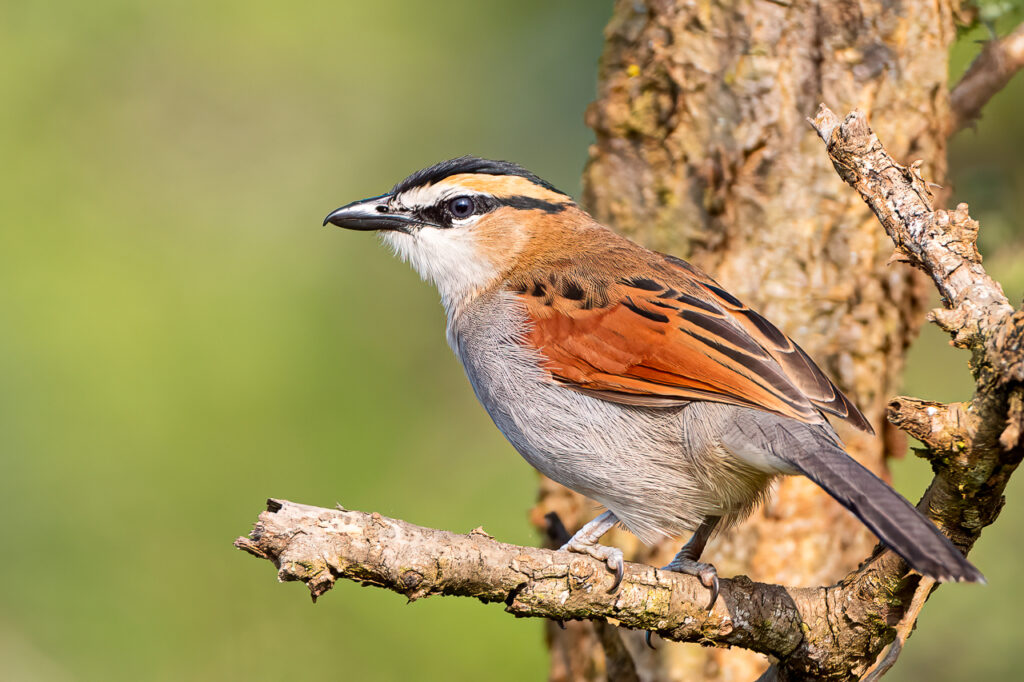
Occupying a wide variety of habitats, from open savanna woodland and acacia scrubland through to dense montane rainforest, members of the family can be found across the country. Whilst some like the Slate-coloured Boubou and Tropical Boubou are either all-black or black and white, others are some of the country’s most colourful and stunning birds, with yellows, oranges, and reds in their plumage. Doherty’s Bushshrike and Papyrus Gonolek are two of the most striking examples. Although some species of bushshrike like to hunt from exposed perches, many prefer to skulk in dense undergrowth, thick tree canopy or deep in papyrus wetlands. This can make spotting some of them somewhat difficult, even with such bright plumage! Thankfully Rwanda has some brilliant bird guides to help locate these avian gems.
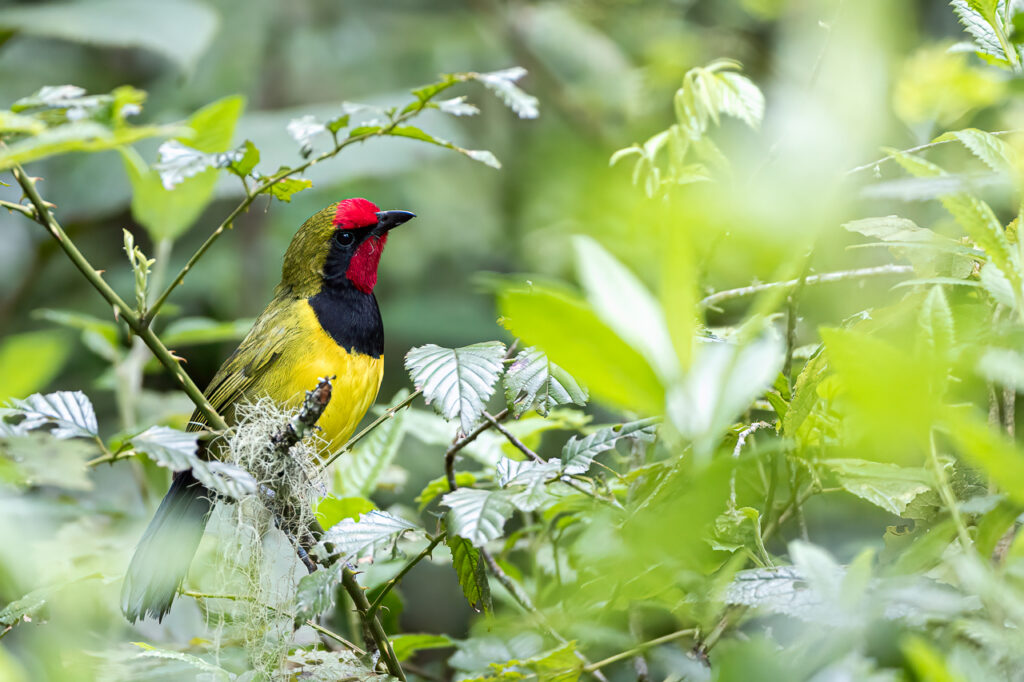
All bushshrike species share a heavy hooked bill, which is used to tear prey items apart. Bushshrikes are accomplished predators of small animals, from insects to lizards, frogs and small mammals. Grey-headed Bushshrikes are known to create larders by impaling prey items on sharp objects such as Acacia thorns so they can return to them later, much like the behaviour of some the ‘typical’ shrikes. Most of the family, especially the tchagras, hunt insects from stationary perches, while others forage in the undergrowth or glean insects from dense vegetation. I’ve spent many an hour lying on my front photographing Black-headed Gonoleks foraging for a meal on the trails at Umusambi Village, located on the eastern outskirts of Kigali.
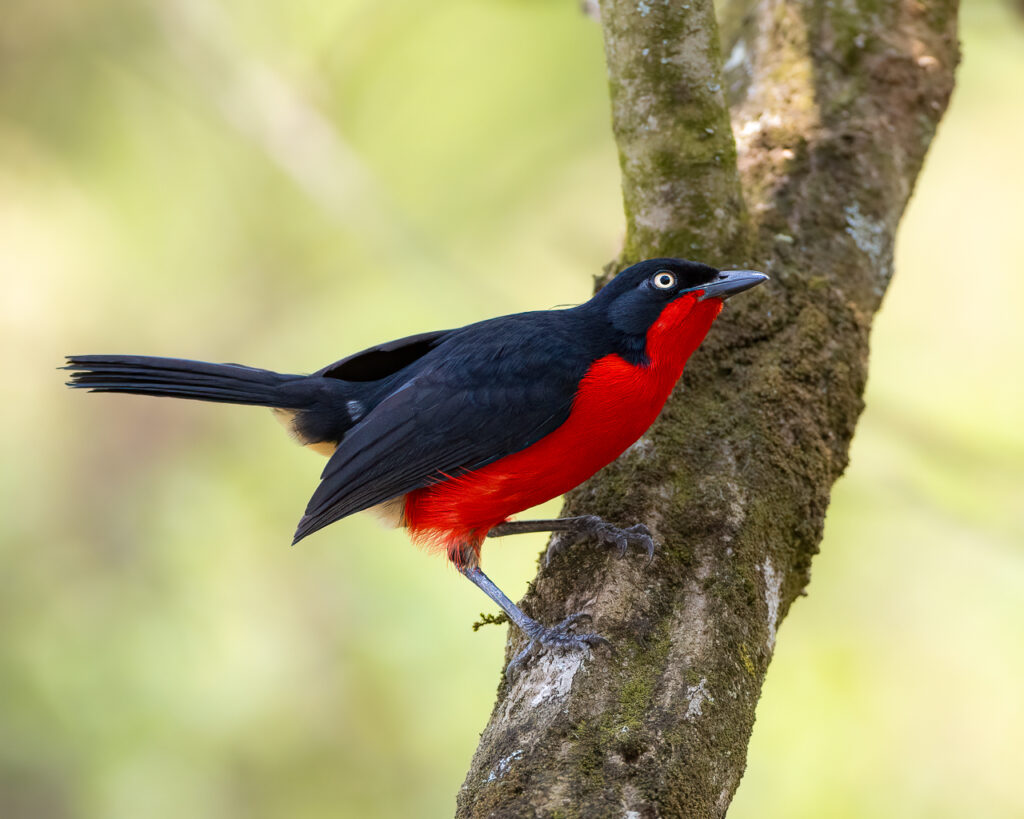
Bushshrikes are also well known for their varied calls, songs, and synchronised duets. Tropical Boubous provide a great example of such complex vocalisations. Males and females sing a highly synchronised duet, during which either bird can be initiated by the other, although it is usually the male who starts the song. Their song repertoires are between 5 to 15 notes long and include fluty whistles, single notes which are repeated at a variety of pitches and sound like bobobobobo (hence their name). These duet phrases/songs are repeated at steady intervals sometimes up to 75 times! The vocalisations are used as contact calls between a pair, they help strengthen pair bonds and also provide territorial defence to other pairs of the same species. A pair’s young will often join, by doing so they learn their parents’ calls. Black-headed Gonoleks are also well known for their duets, often their songs are so highly synchronised that a pair can sound like a single bird!
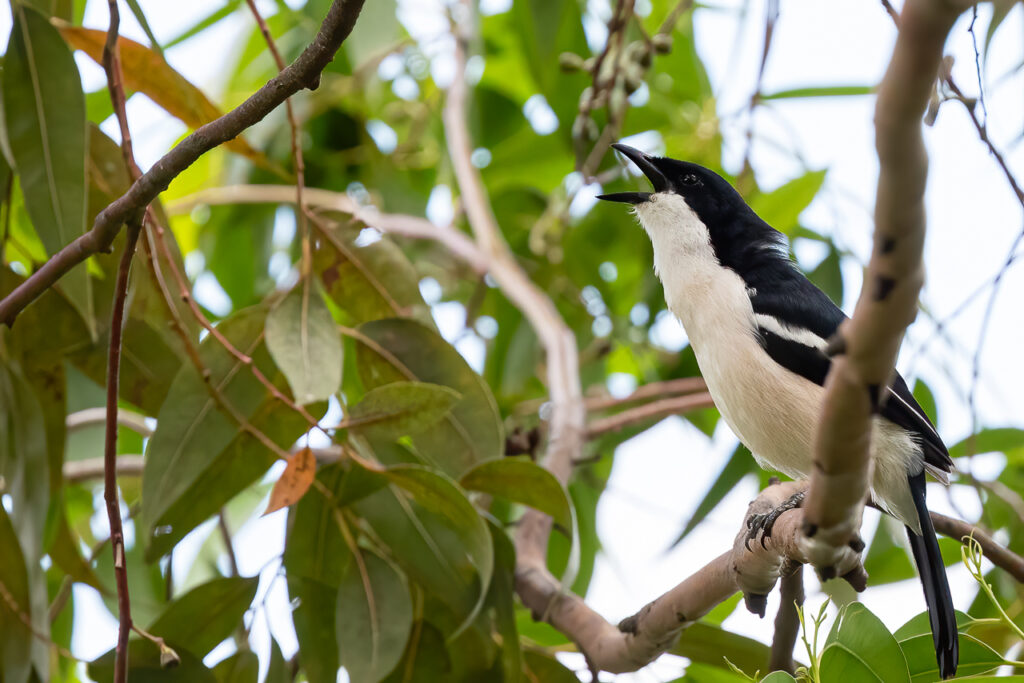
The flight of these medium-sized birds is relatively slow with heavy wing-beats, often interspersed with glides. Due to their large breeding territories and complex duetting, bushshrikes are socially monogamous and form long-term pair bonds. Whilst the majority of this family build flimsy cup-shaped or saucer-shaped structures made mostly of twigs, puffbacks and the Brubru build more compact nests bound together with spiderweb and camouflaged with lichen. In all species but the puffbacks the male helps the female build the nest. Again, other than the puffbacks, males and females both incubate eggs and feed the chicks.
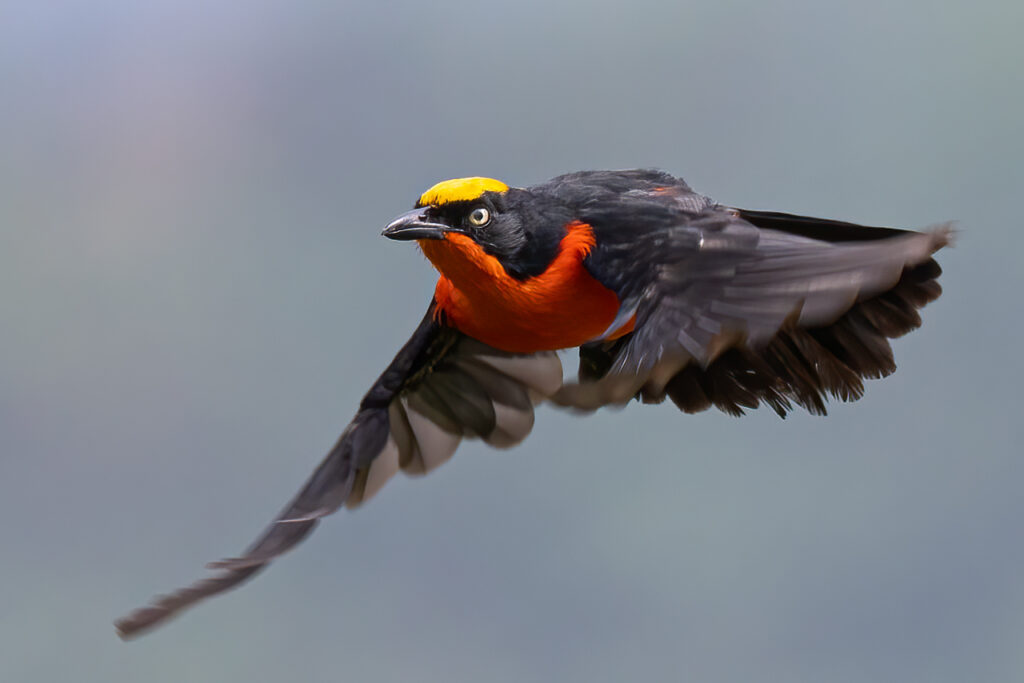
Even though this fascinating family of birds can be elusive, Rwanda provides some great opportunities to experience their synchronised duets and their bright colours – take some time to enjoy the bushshrikes in the city or national parks this month!


You never fail to delight with your lovely photos and in depth knowledge of species’ idiosyncracies. I did wonder what you meant by Rwanda having guides to help find the birds, whether books, apps, or humans?
Thank you, I really do appreciate your comments. I was referring to the human bird guides here in Rwanda – some have excpetional knowledge and skill.
You have an amazing wealth of knowledge, Will! The work you’ve done about the Bushshrikes is terrific! You make us want to go to Rwanda and see these birds, among other things! Bravo!
I appreciate your kind words Nikky, thank you!You should definitely plan a trip to Rwanda – it’s full of beauty.
Greatly informative with stunning photos as usual Will.
Thank you for commenting Lesley, glad you enjoyed it!